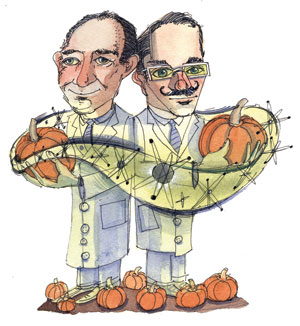|
||
      |
Peer Review ::
From our pages
1907 One hundred years ago, some U of C students dreamt of a world where everyone could understand each other using Esperanto, an “artificial” language created for international use from existing grammars and vocabularies. Floyd B. Hardin, honorary president of the University Esperanto Society, reported in the October Magazine, “An Esperanto rally held April 16 in Reynolds Club theatre gave a substantial impetus to the movement and the membership list soon passed the hundred mark.” A few weeks later, with the help of “prominent Chicago Esperantists,” a play, Fervoja Haltado, was staged in the language.

1957 The October Magazine immortalized Chicago’s Stagg Field in a photo essay documenting its destruction. Although unused since 1939, the field stood as a reminder of the University’s Big Ten glory and its role in the Manhattan Project. On the squash court beneath the field’s west stands, Enrico Fermi oversaw the first artificial, self-sustaining nuclear chain reaction on December 2, 1942. Russian speakers, without a direct translation for “squash,” were said to refer to the historic court as “pumpkin fields.”
1982 Chicago grads often go into government, but early in the Reagan presidency, current and former University administrators went to Washington. George P. Shultz, dean of the GSB in the ’50s and ’60s; W. Allen Wallis, X’35, Shultz’s predecessor; and Kenneth W. Dam, JD’57, the University provost, all were nominated for State Department positions. In the fall issue Milton Friedman, AM’33, gave kudos to the future secretary of state’s approach: “Schultz is bringing in people he has respect for and whom he can work with constructively.”
1997 The October issue took stock of the University’s contribution to the Internet’s advance, profiling U.S. Robotics cofounder Casey Cowell, AB’75. Cowell spent 20 years with Paul Collard, MAT’75; Tom Rossen, AM’70; Stephen Muka; and Stan Metcalf turning the startup into one of the world’s largest dial-up modem companies. U.S. Robotics led the industry by boosting household computer speed from 9.6 kilobytes in the company’s early years to 56 kilobytes by 1997.